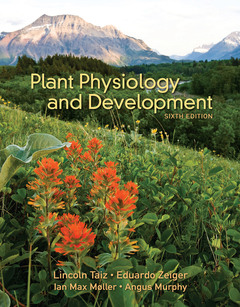Description
Plant Physiology and Development 6th Ed
Author: TAIZ Lincoln
Language: English
Subject for Plant Physiology and Development 6th Ed:
Approximative price 90.84 €
In Print (Delivery period: 14 days).
Add to cartDescription
/li>Readership
/li>Biography
/li>
The Sixth Edition of Plant Physiology and Development also includes updated and improved versions of the physiological chapters in Units I and II. A new chapter on Stomatal Biology has been added to Unit II. The chapters on Mineral Nutrition and Assimilation of Inorganic Nutrients feature a new treatment of nitrogen metabolism:
- Ammonium and nitrate are often lumped together as inorganic nitrogen although their influences on plants are quite different, almost like two different elements. These two forms of nitrogen are therefore treated separately in the Sixth Edition.
- The pathway of all nutrients essential in the human diet begins with plant roots “mining” the soil for mineral elements; the Sixth Edition explicitly examines the linkage between plant nutrition and human health.
- The response of plants to rising atmospheric levels of carbon dioxide depends most strongly on their nitrogen status. The Sixth Edition describes the newly discovered mechanism for this dependence and how it will influence food quality in the future.
- Exciting new findings on the mechanisms of mycorrhizal associations and symbiotic nitrogen fixation will be added, providing insights about the interdependence of plants and microorganisms.
The goal, as always, is to provide the best educational foundation possible for the next generation of plant biologists.




